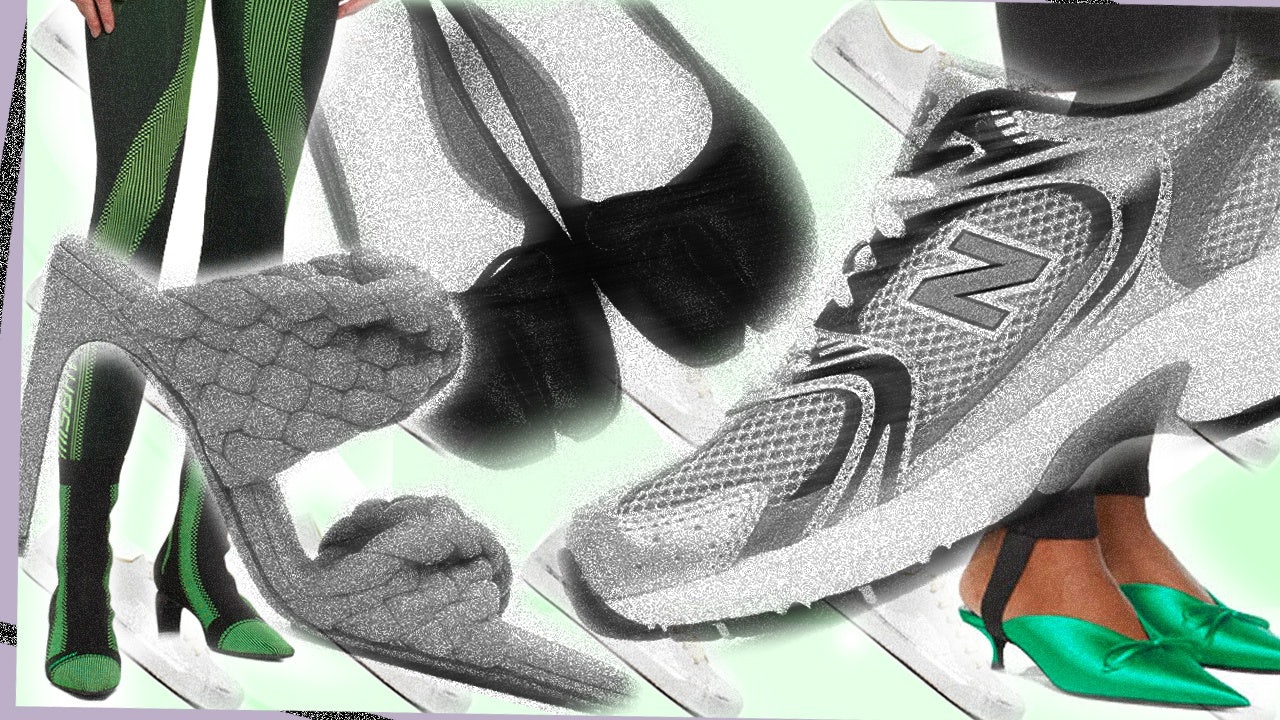Revenue in China’s footwear market so far in 2020 has amounted to over 66 million, according to Statista. Furthermore, the market is forecasted to grow annually by 6.4 percent (CAGR 2020-2025). That shows an enormous opportunity in the footwear market (particularly athletic footwear), but with consumers still hiding at home, retailers are wondering how to boost online sales.
A 2018 Statista survey that included 936 respondents shows that 31.6 percent of US consumers never purchased athletic footwear online. China is a more encouraging case because of its large smartphone market and the user preference for mobile devices. Statista estimates that 51 percent of total revenue in the footwear market will be generated through online sales by 2020, so both global and domestic brands would be wise to produce specialized offers for mobile-first consumers. That is what JD.com and Nike did via their latest augmented reality-powered features.
JD.com will soon launch an augmented reality (AR) try-on feature that allows customers to measure their foot size with a mobile phone that’s equipped with a ToF camera. This function, which was developed in partnership with Sony Semiconductor Solutions Corporation, will leverage Sony’s innovative ToF (Time-of-Flight) distance measuring technology. Additionally, JD.com has already launched an AR feature that lets online customers virtually try-on athletic footwear. Currently, this AR shoe try-on is available for over 1,000 sneakers on JD.
Meanwhile, Nike had already updated its app in 2019 with an AR feature that could measure the shopper’s foot size and deliver a straight-forward, personalized offer. According to The Verge, Nike’s new app “can measure each foot individually — the size, shape, and volume — with accuracy within 2 millimeters and then suggest the specific size of Nike shoe” that customers want.
Finding the right shoe size while browsing products online isn’t simple, and most shoppers identify more with the cons of buying footwear online than pros. That mostly happens because buying footwear implies sizing up or down, making it difficult to find a perfect fit. Consequently, AR features that allow customers to virtually try-on shoes and measure feet are game-changers that can boost revenues and sales.
At this time of reckoning for the retail industry, let’s look at why new AR features represent the future of the footwear market.
In a post-COVID-19 world, “zero-touch” hygienic retail is massively trending, which is hardly surprising since consumers are demanding retailer actions that will help slow the spread of the virus. Contactless commerce is a safer and more hygienic option that helps consumers overcome their current shopping anxieties. But it’s also an extraordinary tool that can accelerate changes in immersive retail, mobile payments, contactless pick-ups, and mobile-enabled virtual sizing solutions.
“E-commerce is perhaps the safest and least dorky way to shop amid COVID-19,” says Chris Walton, a senior contributor at Forbes. “People order goods via their desktops, mobile devices, voice assistants, text messaging platforms, etc. without ever having to leave their homes or interact with a single retail employee face-to-face.”
The new AR try-on feature responds to consumers’ desire to eliminate physical contact while also allowing them to interact with products and brands in a safe environment. This technology improves the shopping experience while significantly reimagining footwear industry engagement.
Let’s face it: Experiential retail was having a moment even before the pandemic hit — the outbreak only hastened this trend. As a matter of fact, Alex Moulton, the chief creative officer of Trollbäck+Company, said in January, prior to the outbreak, that “68 percent of retailers [said] they are making investments into experiential retail for 2020.”
Fast forward to today’s COVID-19 reality, and retailers have reenvisioned experiential retail with a focus on user-friendliness and safety. Now the most engaging experiences prioritize zero-touch features to ensure that consumers feel guarded.
Apart from responding to safety concerns, these new AR features offer product information on sizing and inventory. And this helps brands increase their profit margins because the new system confronts the problems of high return rates and reverse logistics.
According to Statista, US return delivery costs were estimated to be 350 billion in 2017. Moreover, experts forecast that figure to reach 550 billion by 2020. Furthermore, Invesp highlights that 30 percent of all products ordered online are returned as compared to 8.89 percent of products purchased in physical stores.
Returning goods purchased online is a carefree, transparent affair in China, but free shipping and free returns only boost companies’ supply chain costs. Clothes and footwear represent the most frequent returned goods categories, with sizing issues representing the major reason for these returns.
Narvar’s The State of Online Returns in 2019: A Global Study surveyed 3,519 global consumers (1,001 were US shoppers) aged 19-65 who made at least one online purchase in the last year, and they concluded that the top reason for returning goods was the wrong size, fit, or color (34 percent).
If they can reduce the risks associated with wrong sizing, online retailers can increase the frequency of impulse buying. If consumers no longer have anxiety about wrong sizing, they will see online purchases as “safe” options and will become more inclined to buy them compulsively.
By incorporating their new AR feature, JD.com and Nike have responded effectively to customer demands while creating cost-effective solutions that lower expenses associated with the reverse logistics. In the end, the process has increased demand for their goods and is positively impacting Nike’s and JD’s brand equity.

